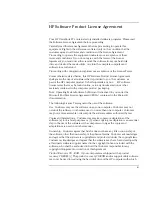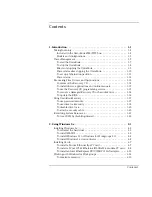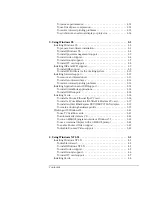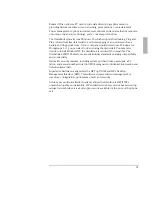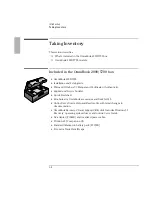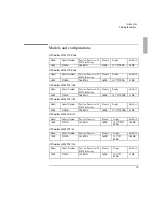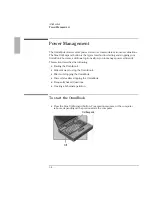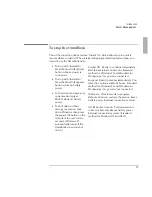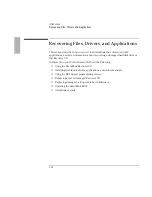
1-2
Introduction
Thank you for evaluating the HP OmniBook 2000/5700.
The Mobile Computing Division developed this
Corporate Evaluator's Guide
to
facilitate your appraisal of the OmniBook. The guide discusses the machine's major
features and provides instruction on specific operating systems. Rebuilding the
OmniBook if the hard drive has been formatted and loaded with your company’s
disk image is discussed for each operating system, particularly addressing
OmniBook-specific software, device drivers, and multimedia support. You will find
information on system resources, technical specifications, solutions to common
problems, and a list of support resources. Much of this information is derived from
our standard documentation and is consolidated here to facilitate your evaluation
of the OmniBook.
The performance-leading Hewlett-Packard OmniBook 5700 features the following:
•
Intel Pentium 150 or 166 MHz processor with MMX technology.
•
512-KB Pipeline Burst Synchronous L2 cache.
•
Up to128 MB of RAM.
•
12.1 inch TFT, XGA, or SVGA display.
•
PCI BUS architecture.
•
Optional internal 10x CD-ROM.
•
2.1 or 3.0 GB hard drive.
•
Zoomed video.
•
PC CardBus.
•
64-bit graphics accelerator with 2 MB EDO video memory.
The value-added Hewlett-Packard OmniBook 2000 features the following:
•
Intel Pentium 133 MHz processor with or without MMX technology.
•
Up to128 MB of RAM.
•
12.1 inch SVGA, TFT, or DSTN display.
•
PCI BUS architecture.
•
Optional internal 10x CD-ROM.
•
1.44 or 2.1 GB hard drive.
•
Zoomed video.
•
PC CardBus.
•
64-bit graphics accelerator with 2 MB EDO video memory.
These features illustrate the uncompromising performance of HP's most powerful
notebook PCs ever, laptops fully capable of replacing a desktop computer. Optional
docking systems allow single-action connection to multiple peripherals, and the PC
CardBus-enabled 32-bit PC card slots allow 100-Mbps networking and other high-
bandwidth applications.
Summary of Contents for OMNIBOOK 5700
Page 1: ...HP OmniBook 2000 5700 Corporate Evaluator s Guide ...
Page 9: ...1 Introduction ...
Page 30: ......
Page 31: ...2 Using Windows 3 x ...
Page 45: ...3 Using Windows 95 ...
Page 67: ...4 Using Windows NT 3 51 ...
Page 81: ...5 Using Windows NT 4 0 ...
Page 99: ...6 Using OS 2 Warp 4 0 ...
Page 116: ......
Page 117: ...7 Using the OmniBook Docking System ...
Page 124: ......
Page 125: ...8 Features and Support Services ...



